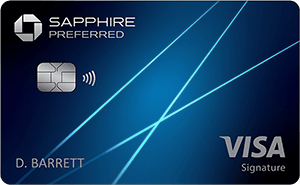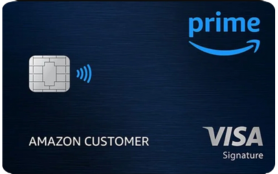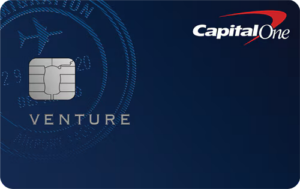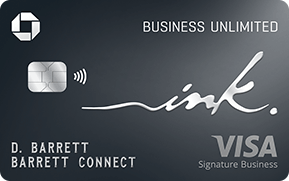Overview
Overdraft fees suck. While they do make sense from a bank’s standpoint, the vast majority of us wake up to find a -$35 surprise waiting in our bank accounts. And nine times out of ten, it was nothing but a timing mistake… You might even have been getting paid that day.
The good news is that, unlike other charges, they can be reversed in many situations, especially after little blips on an otherwise clean account. The key is knowing how to do it, when to do it, and having the right arguments ready in case you encounter a stubborn employee.
What Are Overdraft Fees & Why You Might Be Eligible for a Refund
Before we show you how to counteract them, it’s important we look at what they are first. If you have no clue, that’s probably a good thing. An overdraft fee is what your bank charges when it lets a withdrawal, debit, or automated payment go through on an account when there aren’t enough funds.
In short, it’s like having a (not very good) buddy, spot you a drink at the bar because your card didn’t work, then charges you $35 for the favor.
But, with that said, many banks are willing to refund or waive the fee in certain situations. Some of these situations include:
You’re a longtime, “good” customer (with consistent deposit behavior).
This is a rare or first-time overdraft.
Timing or merchant issues contributed (e.g., delayed deposit, merchant charged more than expected).
The bank offers a “grace period” or overdraft forgiveness window (some do).
You catch the overdraft quickly and act fast.
It’s not guaranteed, and will depend heavily on your specific bank, your account standing and history, and how well you plead your case to them.
Real-Life Bank Policies & Programs
Some banks have grace periods or refund policies built into their rules and regulations. That doesn’t mean you should let it slide whenever you want, but it’s good to know the fallback is there if needed.
Here are a few examples of helpful policies.
U.S. Bank has an Overdraft Fee Forgiven program: if your account is overdrawn by $50 or less, or if you deposit enough funds by 11 p.m. ET the day the fee was charged, the bank may waive the fee.
Citizens Bank’s “Peace of Mind” gives you until 10 p.m. ET the next day to bring your account back to $0 so the overdraft fee is rebated. You don’t have to cover the fee itself in the deposit, just the transactions that caused the overdraft.
TD Bank’s Overdraft Relief / Grace Period: if you overdraw your account, TD gives you until 11 p.m. ET the next business day to fix the balance. If your account is at least $0 by then, they’ll refund the fee.
Others, like Wells Fargo, don’t explicitly say they’ll refund customers, but they won’t charge the fee until 11:59 PM the next business day. I have personal experience with Wells Fargo beyond that time, and I’ve had mixed results.
How to ask (and what to say)
Here’s a step-by-step playbook for requesting a refund:
Gather your facts first: Before you do anything, it’s important to get your facts straight. Note the date of the overdraft (or overdrafts, hopefully not), as well as the fee amount, what led to it, and your account history. Now, if you’ve got a poor track record and your only excuse for the overdraft was spending a little too much on dinners that month, you might not be in the best spot. If your account is spotless and you just mixed up your dates, then you’re probably in good shape.
Contact your bank (phone, email, or branch visit): Next, you need to get in touch with your bank. Don’t wait too long to do this. A week later is not going to help your case. Many banks nowadays have online chat technology that can connect you through your phone or laptop, while others will still require an email, a branch visit, or a call. Whatever makes it easiest for you. From there, it’s a case of remaining polite but firm, and making it clear it was a mistake or that there were extenuating circumstances, like a late direct deposit. Highlight how strong a customer you’ve been in the past and see what happens.
Go up the chain if needed and stay persistent: Persistence is key if the first representative won’t play ball. If you’re rejected, remain polite, but request to be sent up the chain to their supervisor or manager. It’s vital to ensure you’re not rude to anyone, as it will never help your chances. Document everyone you talk to, including the time you spent talking, what you chatted about, and the outcome. You may not need any of that information, but it helps to have it just in case. If all else fails and you feel like the bank has acted unfairly, you can escalate things by doing something like filing a complaint with the Consumer Financial Protection Bureau. Of course, if you really don’t have much of an excuse, it’s maybe time to take the hit and make sure it doesn’t happen again.
How to Avoid Overdraft Fees in the Future
Getting a refund is nice, but avoiding them altogether is better. It’s always helpful to take some preventative measures and keep yourself in good standing with the banks. Here are a few ways to do that.
Opt out of overdraft protection for debit/ATM. Overdraft protection sounds like a nice idea, but in reality, it’s what got you into this mess in the first place. Opting out means the charge will be declined. You may have a payment issue on the other side, but it’s better than a fee.
Link a savings account, line of credit, or backup account. Linking your savings account and making sure there’s a little in there at least can help stop the fees by automatically transferring funds when they end. There is a chance there will be a fee for this, too, but it’ll likely be lower than the overdraft one, so it may be worth it.
Set up low-balance alerts. Low balance alerts can give you a heads up right before an overdraft happens. If you know funds will be leaving the account right after you get told there’s only $100 in there, you can take measures to fix it beforehand.
Keep a buffer (Zero isn’t zero). By keeping a buffer, we mean treating your lowest balance not as $0, but $100 (or whatever figure makes sense for you. If you can make it a mental point to never dip below that figure, you’ll be in good shape in the long run.
Keep on top of your automatic payments. Autopay features are great for staying on top of your bills. They’re not as good for keeping on top of lower balances. If you have a low-effort banking system running with a balance that can get precariously low, it might be worth switching your style a little.
The Point
Many banks have overdraft fees, and for good reason, it protects them. But, if you act quickly, have a solid banking history, and communicate with respect to the bank, there’s a good chance you’ll be able to get that fee refunded. After that, it’s time to analyze your setup and make sure it doesn’t happen again.









 by your friends at The Daily Navigator
by your friends at The Daily Navigator



